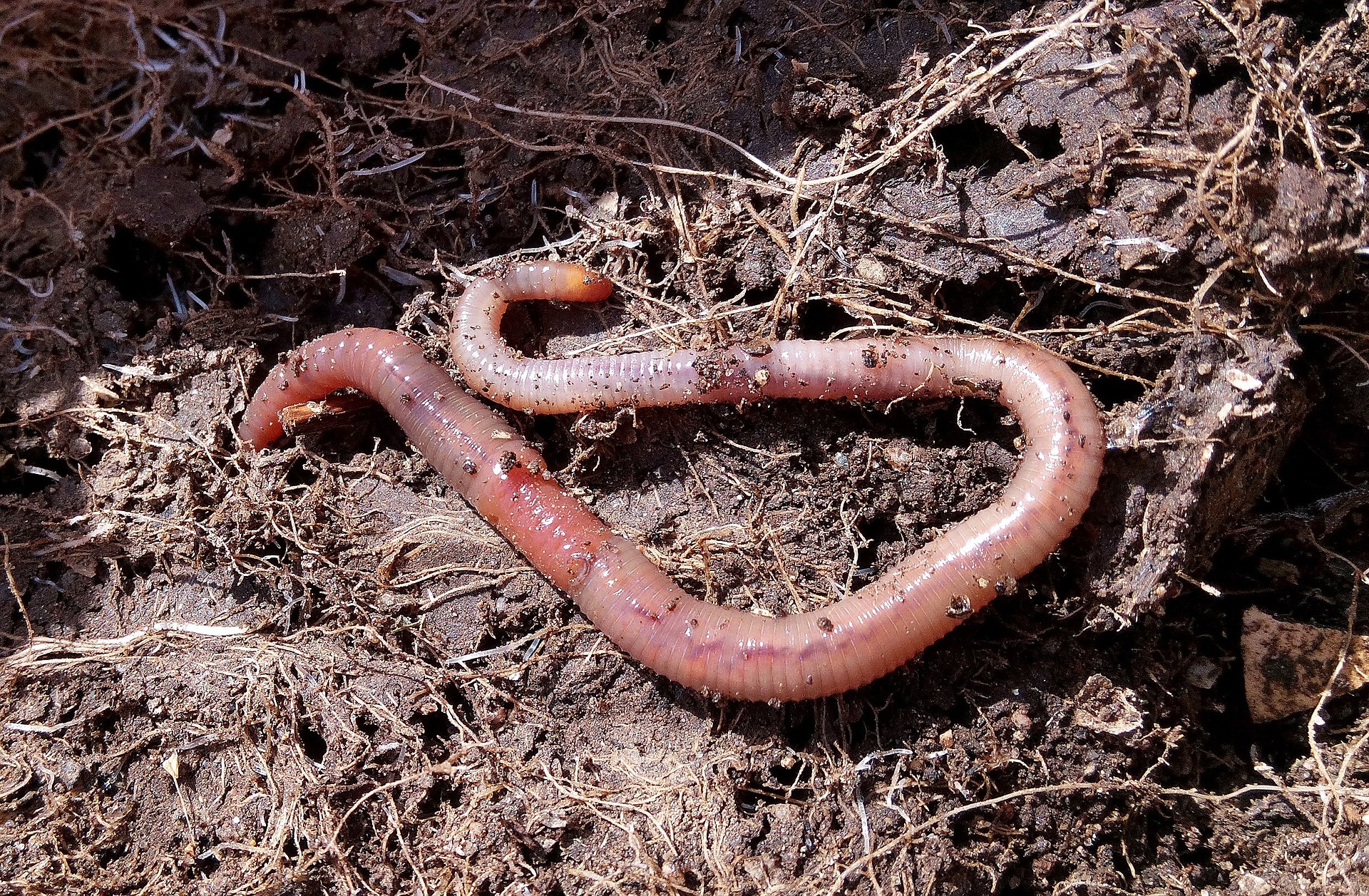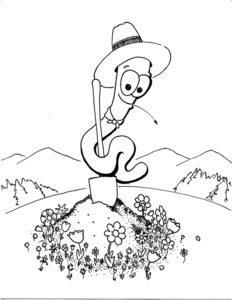Vermiculture is the process of worms breaking down organic food waste and transforming it into nutrient-rich, soil-building material that supplies nutrients necessary for plant growth and health.
The end product, known as worm compost, worm castings, worm manure, etc, is similar to regular compost except that it utilizes worms in addition to microbes and bacteria to turn organic waste into nutrient-rich fertilizer. Red Wigglers (Eisenia foetida) are a wonderful worm to use for this process.
Setting Up A Worm Bin
Location: When setting up a location to keep your worm bin, it’s good to consider temperature, moisture, acidity, and ventilation. There are many locations that work for the worms, and can also be convenient for you- for example, the kitchen is handy for transporting food waste scraps straight into your bin. Patio, balcony, well-ventilated garage, or a basement would all be adequate locations, depending on your preference and what kind of space you have available.
Temperature: The worms thrive best at temperatures between 59-77˚F. They can tolerate a fairly wide range of temperatures, though below freezing temperatures can kill them, as well as bedding temperatures that climb above 86˚F.
Moisture: Moisture is very important to worms. They breathe through their skin, so air exchange and waste excretion occurs when there is moisture present in the bedding. However, too much moisture (standing water) can cause them to drown. This is why location is important. The bin should be placed in an area where there is no danger of natural flooding of the bin. Aeration is also important. Allowing air to freely flow through your bins is great for your worms, as they breathe oxygen and produce carbon dioxide and can smother without a source of oxygen. Slightly acidic conditions are best for your worms. A wide range of a pH of 5-9 is completely suitable. Anything below that can be harmful, and will cause your worms to try to escape.
Container Choice: There are many different varieties and materials to be used for worm bins. Wood breathes well, but deteriorate within a couple years. Plastic is great, but needs to have plenty of holes for ventilation so worms do not suffocate. Down to Earth carries a very convenient, ready-to-use 3-tray system called the Vermihut Worm Composter. It can recycle up to 5 lbs of kitchen scraps a week. Made from HDPE recycled plastic, it is compact, odorless, and easy to use and maintain. Each tray can hold up to about 1,200 worms. There is a drip tray at the very bottom with a spigot for decanting your own “worm tea”. How it works: The worms start at the bottom tray, munching scraps and turning it into rich worm compost. They begin to move up into the next tray above, where you can start adding fresh scraps for them to feed on. After all the worms have vacated the lower bin, you can empty your worm compost, refill the tray with fresh bedding and food scraps, then set the refilled tray on the top.
Worm Bedding: It is usually some form of cellulose, and is ideally light and fluffy for air exchange, helping with odor control. The worms will eventually consume the bedding as well. Many materials work for this, and you may find that some work better than others. Shredded newsprint (preferably black & white inks) is a favorable bedding when torn into strips. Coconut coir fiber is relatively inexpensive and has high water holding capacity, and is great when mixed with other forms of bedding (make sure to rinse your coir fiber before using due to salt content.) Small amounts of shredded paper and cardboard work. Decaying leaves provide a suitable medium as well. Adding a couple handfuls of soil to your bedding mix initially adds grit and also a variety of inoculum which can be beneficial. When adding bedding, it should be nice and damp, but not soggy.
Worms: How many worms to use? A good ratio of worms to food waste is 2:1. For example, if you dispose of about a pound of scraps per day, two pounds of worms are a good amount to feed on it to break it down.
After preparing your bedding mix, empty the container of worms into the tray. If you leave them exposed to light, they will hide under the bedding. If any worms are still on top of the bedding after an hour, it is likely they are either sick or deceased. Lift up some of your bedding and deposit the food scraps, cover with a small layer of bedding, then place the lid over the top.
Worm Health and Well Being
Avoid an excess amount of citrus in your bins, as limonene can be toxic to your worms. As you take care of your worms, you’ll notice that certain food items are more desired than others. Avoid anything non biodegradable, dairy or meat products, as well as pet and animal wastes.
Every time you add a collection of scraps to the bin, just add another layer of bedding on top to bury it. This provides some moisture control, a long term food source, and is helpful for maintaining oxygen flow. It will shrink considerably in a short amount of time. For the overall health conditions and environment of your bin, it is important to keep adding bedding every time you add food for your worms! If you have a worm bin like the Vermahut, you will not have to worry about excess moisture, as it will fall to the drip tray below. If you are using a different method, you may have to add additional bedding to help absorb moisture, use a turkey baster to pull out excess, or gently tip the tray to drain any standing water that could harm your worms.
Maintenance
Taking care of worms is relatively low maintenance. They can be left alone to their own devices for a week or two, so you don’t need a sitter to go on vacation. If they are left alone for a really long time (months), they will consume the food source, redigest it, resulting in straight worm castings that are not as rich in nutrients as worm compost, and your worms will perish. If you regularly supply your worms with fresh bedding and food, they will proliferate and thrive.
Uses For Your Worm Compost
Worm compost is rich in castings, humus, and decomposing matter. A very important component of this blend of worm compost is humus. The humic acid found in humus is important for creating binding sites of essential nutrients for your plants, such as calcium, iron, potassium, phosphorus, and sulfur. It can enhance permeability of the soil, and also stimulate plant growth. Seedlings and transplants benefit greatly from a small application of worm compost mixed into the planting site. As your plants grow, it can be used as a side dress. You could also use worm compost to make your own unique potting soil blend.




